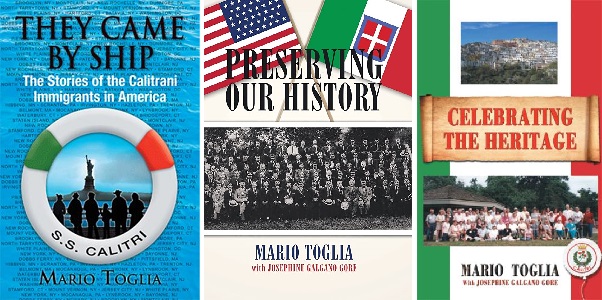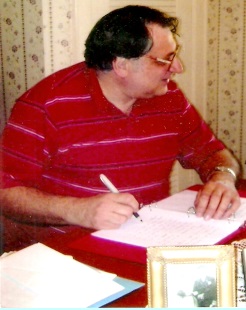 Interview by Tiziano Thomas Dossena
Interview by Tiziano Thomas Dossena
Mr. Mario Toglia is an executive board member of the Italian American Studies Association — Long Island Chapter, as well as the Director of Special Projects for the Italian Genealogical Group.
As a proud Italian American, he advocates the preservation of one’s heritage, and this belief brought him to write three books, “They Came by Ship: The Stories of the Calitrani Immigrants in America;” “Preserving Our History” and “Celebrating the Heritage.”
Besides researching and preserving family narratives, he believes in the conservation of historic monuments with special meaning for Italian American history.
L’Idea Magazine: Hello Mario. It is obvious from your curriculum that you are concerned with the preservation of our heritage, both at the societal level and at the family level. Could you tell me when and how this became your major interest? 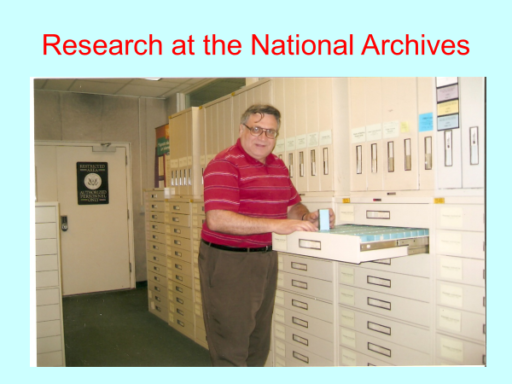 Mario Toglia: While doing research for my first book, I discovered that my Calitrani community was a microcosm of the larger Italian American community. They had their own weekly newsletter, l’Eco Calitrana, a dramatic society, various mutual aid societies, and held picnics and social gatherings to keep their community united. In 2004 I met Vincenza Scarpaci, historian, and author who was collecting photographs for her book project. [I had already collected photos for my first book and had many to share] She invited me to speak about my project at the Italian American Historical Association conference in Orlando in 2006. Attending it was an eye-opener because I never considered Italian American history to be a singular topic of interest and yet there were speakers from around the world. Considering things, I was learning about my own ancestral community, I realized that they had a very unique history and that Italian Americans as a larger group truly had a remarkable history as well.
Mario Toglia: While doing research for my first book, I discovered that my Calitrani community was a microcosm of the larger Italian American community. They had their own weekly newsletter, l’Eco Calitrana, a dramatic society, various mutual aid societies, and held picnics and social gatherings to keep their community united. In 2004 I met Vincenza Scarpaci, historian, and author who was collecting photographs for her book project. [I had already collected photos for my first book and had many to share] She invited me to speak about my project at the Italian American Historical Association conference in Orlando in 2006. Attending it was an eye-opener because I never considered Italian American history to be a singular topic of interest and yet there were speakers from around the world. Considering things, I was learning about my own ancestral community, I realized that they had a very unique history and that Italian Americans as a larger group truly had a remarkable history as well.
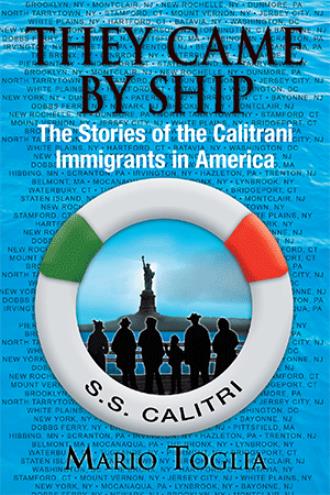 L’Idea Magazine: So, from all this collected data were born your three books… Could you talk about your first one, “They Came by Ship”? [maybe also give a brief synopsis of the book]
L’Idea Magazine: So, from all this collected data were born your three books… Could you talk about your first one, “They Came by Ship”? [maybe also give a brief synopsis of the book]
Mario Toglia: I consider my first book to be the product of the Internet Age. Once I purchased a computer, I began doing genealogical research online where I met and interacted with descendants of Calitrani immigrants. One person, Marlene Dunham from Seattle, had started a newsletter on her Italian surname: Fastiggi. I discovered an ancestor with that surname and communicated with her. Another person, Eleanor Egger, who joined our online conversation, suggested Marlene start a website.
Through the Internet, a website was created called Calitrani Connections. Subscribers to the website began sending in stories that were posted online. Eventually, it was suggested that these stories be collected into book form. I thought it was a great idea. Since many of the ‘storytellers’ were elderly I began traveling to their homes and towns to collect their stories. In fact, others liked the idea of creating a memoir book and so a Writing/Editorial Team was created. After some 5-6 years, a book with 120 articles and a list of some 3000 Calitrani ship passengers was created. Biographies submitted were from states in the Northeast where these immigrants settled.
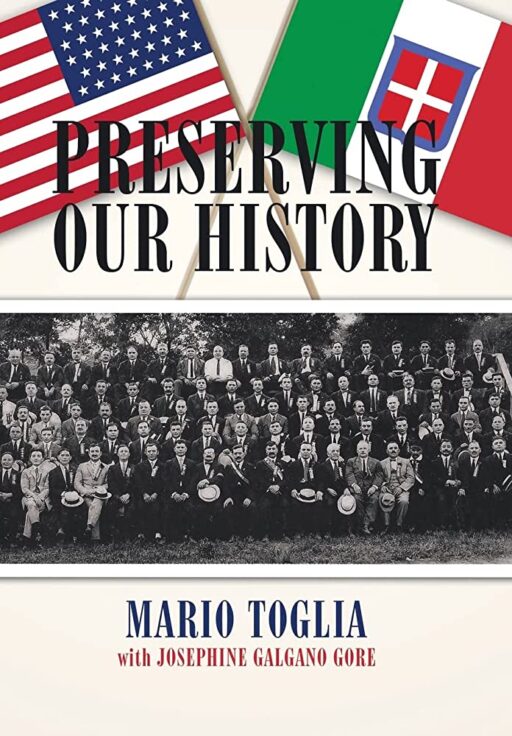 L’Idea Magazine: Your second book, “Preserving Our History,” is directly connected to the data collected in your research, as I understand. Could you tell us what is the major difference in the content of this book and the one of “They Came by Ship”?
L’Idea Magazine: Your second book, “Preserving Our History,” is directly connected to the data collected in your research, as I understand. Could you tell us what is the major difference in the content of this book and the one of “They Came by Ship”?
Mario Toglia: Basically, the second book is the same as the first. The only difference is that once people read the first book, they realized not only did they have family stories, but they felt confident in writing their own. They contacted me with their remembrances of their immigrant ancestors. The second book contains 58 stories plus church records, certificates for mutual aid societies, and poems. The stories were primarily from New York City and Westchester County.
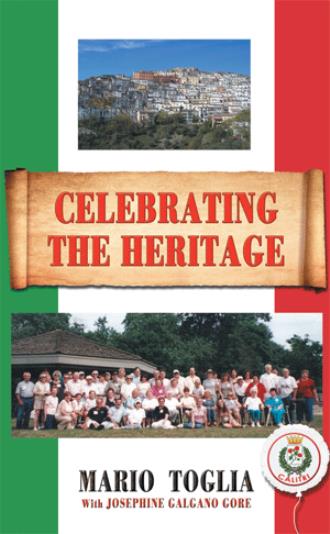 L’Idea Magazine: Your third book, “Celebrating the Heritage,” seems to be on track with the presentations I have been giving on writing memoirs and preserving our family heritage. I am very happy to see other respected members of our community are attempting to make our community aware of the need of preserving our heritage and our family history. Is this book more generalized on our Italian heritage than the preceding one? How strong do you feel about this appeal of yours?
L’Idea Magazine: Your third book, “Celebrating the Heritage,” seems to be on track with the presentations I have been giving on writing memoirs and preserving our family heritage. I am very happy to see other respected members of our community are attempting to make our community aware of the need of preserving our heritage and our family history. Is this book more generalized on our Italian heritage than the preceding one? How strong do you feel about this appeal of yours?
Mario Toglia: The third book was to be part of the second, but so many stories had been collected that I had to create another book. This third book contains 122 stories including 12 by those descendants who wrote about returning to the ancestral town. Additionally, I included resource material collected from trips to the various towns of settlements: marriage records researched from various courthouses, naturalization records, certificates of incorporation plus many photographs and documents.
L’Idea Magazine: You were active with the Brownsville Cultural Coalition in their attempt to save Our Lady of Loreto church in Brooklyn from demolition and did extensive research on the building’s significance in various fields and histories. What was the reason you got involved and what was the outcome of this effort?
Mario Toglia: In doing research on the Calitrani immigrant community, I discovered they had religious events at Our Lady of Loreto church. Some years later. I joined an Italian genealogy group and learned that they had transcribed baptism and marriage records from that parish. I asked to see the records and found many of my paesani were listed, which I included in my first book. One club member, a former parishioner of OLL, realized my indirect connection to this church. She had learned that the church was slated for demolition. This was in December 2008 and my first book on the Calitrani community had come out the year before with photographs of the Calitrani at OLL. She asked me to join an effort to save the building from demolition. All discussions about saving the building were online until I took the initiative to ask for an in-person meeting. A group of us met. One person, former parishioner Charles Piazza, realized that the church needed a plan to re-purpose the building. He brought in a local developer who contracted a Brooklyn architect to draw plans for a housing complex with the church building to be a cultural center. These plans were presented to the Diocesan Office, who wanted to know how much it would cost to repair the church. Our preservation group became connected to the New York Landmarks Conservancy and the New York State Office of Historic Preservation which absolutely wanted this historic building preserved because it was the only reminder that Italians lived in Ocean Hill Brownsville. A New Jersey-based church restoration group estimated it would cost $2 million. The Diocese estimated 4 million, so NYLC offered to pay for another engineering group to come in for a new estimation. The Diocese stonewalled and then refused to let that engineering team enter the building.
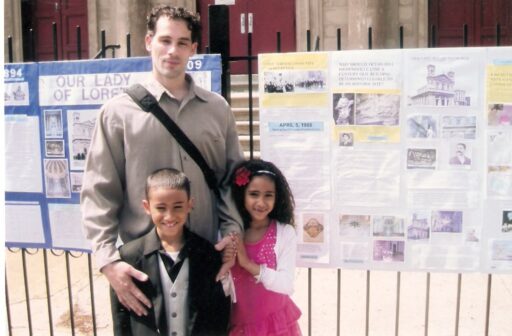
Our next step was to bring the importance of this building to the Italian American community. I teamed up with Marilyn Verna from the genealogical society. In the meantime, I realized that in just saying the church was a reminder of an Italian neighborhood was not enough. I needed to know more so I contacted Vincenza Scarpaci, who linked me to the church sculptor’s granddaughter, who connected me to Dr. Flavia Alaya, an authority on Gaetano Federici, the sculptor. She sent me her book on his life. A footnote in a chapter listed that the church’s dedication day booklet was to be found at the Passaic County Historical Library. Once I received it, I learned how significant this building was to Italian American history. In an era of discrimination against Italian immigrants, the pastor purposely hired only Italian-born artisans [builder (Antonio Federici), architect (Adriano Armezzani); sculptor (Gaetano Federici), interior decorator (Serafino Biancardi) and artist (Gaetano Caponi)] to construct this church to emphasize their talent. As a result of newspaper articles, presentations and demonstrations, the building was saved. The NYS Office of Historic Preservation allowed the Diocese to demolish the rectory in order to save the church building. However, the Diocese did not maintain the building (as agreed) and for many years after 2013, the building deteriorated to the point that Albany had no choice but to allow its demolition in 2016.
L’Idea Magazine: Always in relation to our heritage, what is your opinion about the attempt to erase Christopher Columbus from our history and public deference? Do you feel that the protesters accusing him of being a colonizer have the right to cancel him because of that?
Mario Toglia: In my research on my Calitrani paesani in Bridgeport, I visited the central library in that city and looked through the microfilms of local newspapers there, as well as their archives of historical documents. One interesting find was eight photographs of the city’s first Columbus Day parade in 1892 featuring coaches advertising local businesses. Surprisingly, there was nothing “Italian” about the parade… All the horse-drawn wagons were sponsored by local businesses.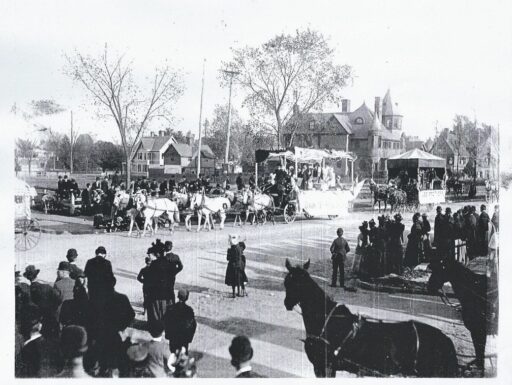
However, after World War I, Columbus Day became an event for Italian pride, and attacks against this immigrant community commenced. One of my paesano, Joseph Cubelli, was called in to debate a Methodist pastor who claimed that Columbus did not discover the New World. Cubelli was ready to debate but refused after the minister demanded $1000 for a church building fund and the KKK became involved with a $100 donation.
In reading various articles I learned that doctors of Italian descent were discriminated against in finding positions in the local hospitals…and so, they responded by founding Columbus Hospital in Bridgeport… The name Columbus became synonymous with Italian American pride and has continued to be so.
Since Christopher Columbus is considered to be the discoverer of the New World (from what the Woke group says is a Eurocentric point of view) and thus the cause of all the subsequent ills foisted on the Western Hemisphere, he has become their primary bete noire. Columbus should be honored, I believe, for his greatest accomplishments and not for whatever weaknesses he is accused of.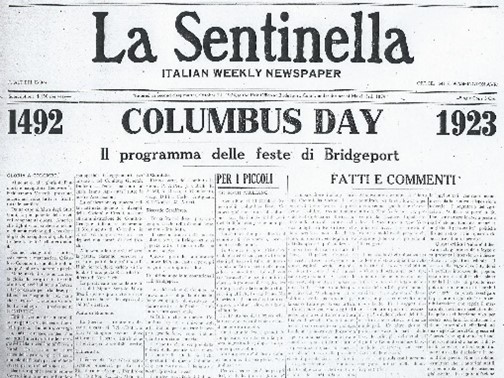
L’Idea Magazine: Do you believe the media in general presents the Italian American in a fair manner? What about in the past?
Mario Toglia: As most Italian Americans know, our ethnic group was maligned and labeled negatively in the media for many decades, so much so that I had learned that in some American towns, Italians were zoned to live “on the other side of the tracks.” Today, I believe that Italian Americans are now part of mainstream America.
L’Idea Magazine: How much have your Italian roots influenced your career and your personal life?
Mario Toglia: I would say, growing up hearing my parents speak their native dialect, and listening to Italian programs on the radio, I became interested in other foreign languages and cultures and thus became a teacher of French, Spanish, and Italian. I certainly respect other cultures and ethnic groups.
L’Idea Magazine: Do you have any books or other special projects you are working on currently?
Mario Toglia: Yes, taking my books on preserving the lives of immigrants from Calitri a step further, I have initiated a book project within the Italian Genealogical Group on collecting stories from other Italian Americans on their ancestors.
L’Idea Magazine: Have you visited Italy? If so, what impact did that have on you?
Mario Toglia: I have visited Italy many times including my parents’ hometown of Calitri. The country is absolutely beautiful, and its major cities reflect many epochs of civilization: Roman, Greek, Medieval, Renaissance, Baroque, Byzantine, etc.


